Last updated on April 8, 2024
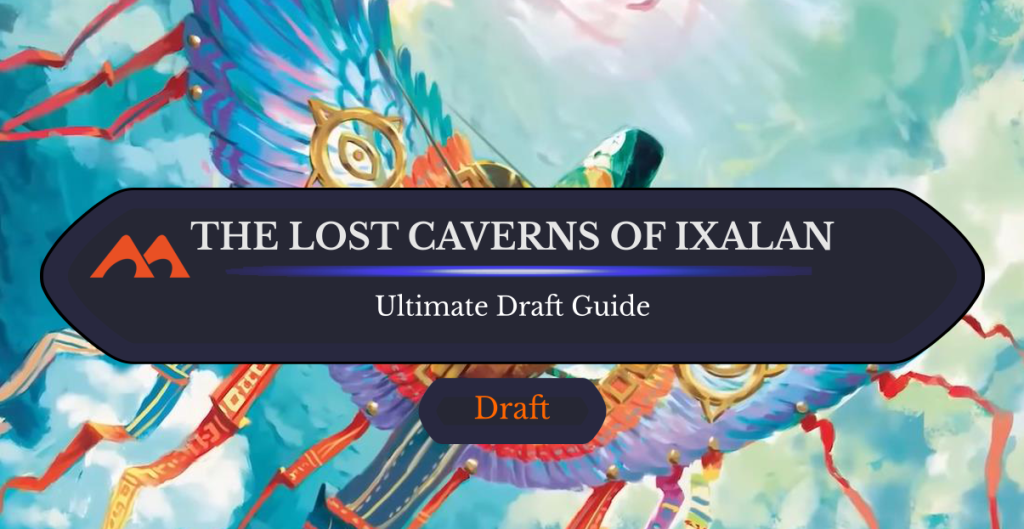
Sunbird Effigy | Illustration by Aldo Dominguez
Greetings planeswalkers! We’ve had just over a week with The Lost Caverns of Ixalan and there’s a Sealed/Draft Open this weekend. Seems like a great time for another Draft guide!
Format Big Picture
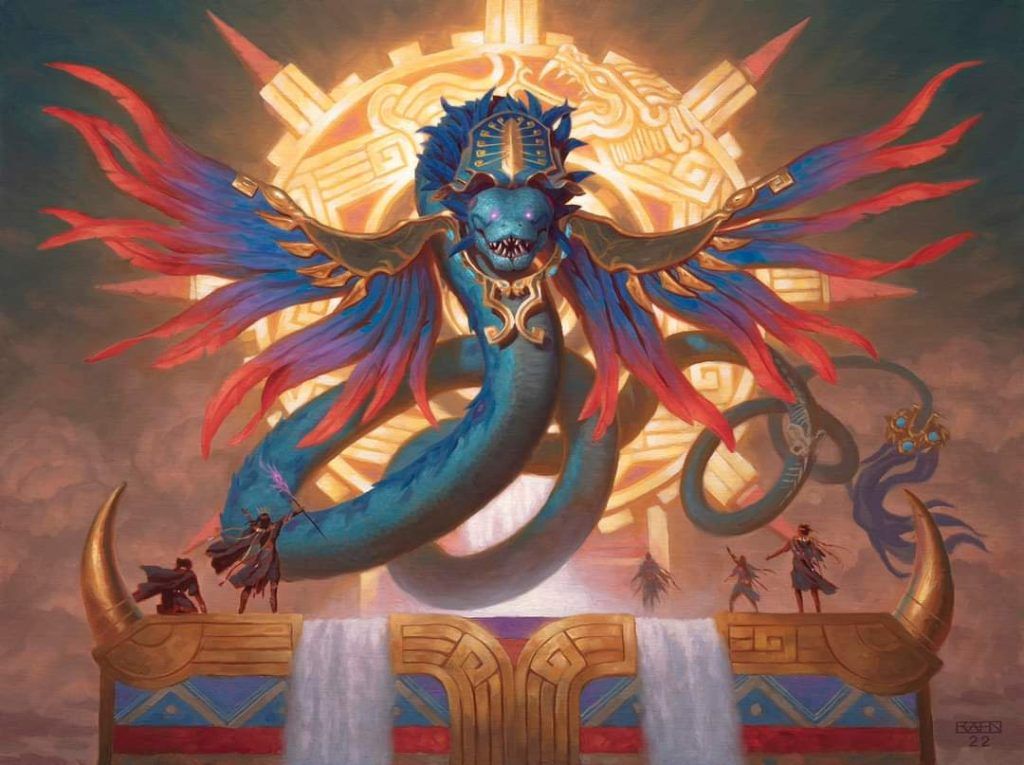
Ojer Pakpatiq, Deepest Epoch | Illustration by Chris Rahn
If I could sum up The Lost Caverns of Ixalan in one word, it’d be tempo. Though not the fastest format in terms of turns per game, this is a rough format to fall behind in. Efficient creatures like Goblin Tomb Raider and Sunshot Militia might have you regretting sluggish keeps. There are also some great commons like Miner's Guidewing, Oltec Cloud Guard and Waterwind Scout that are cheap, evasive, and difficult to interact with profitably.
Color/Archetype Balance
The color/archetype balance in this set hasn’t been especially impressive. I’d rank the colors as follows:
- White
- Blue
- Red
- Green
- Black
White is the best color thanks to efficient cheap creatures and two great common removal spells. Blue is a close runner up off the back of Waterwind Scout (the best common in the format) and plenty of other decent commons. Red’s greatest strengths are its efficient common creatures and Abrade. Green has some strong value creatures but struggles to keep pace early on with other colors.
Black is the worst color in the format. Its removal isn’t bad (Join the Dead, Dead Weight, and Ray of Ruin) but isn’t premium like Candy Grapple was. Its main shortcomings are its lackluster creatures, which can’t profitably block or race fliers/Sunshot Militia. As for ranking the archetypes:
The big four are easily the best decks in the format. The descend mechanic (the focus of Dimir () / Golgari () / Rakdos ) has also underperformed expectations a bit, thanks to mediocre enablers and payoffs that are vulnerable to efficient removal like Petrify or Quicksand Whirlpool. One nice thing about Lost Caverns is that it doesn’t have a “dunce cap” archetype like Azorius frost in Wilds of Eldraine. If an archetype is open enough, you should consider drafting it!
Deckbuilding Advice
You should play 16-17 lands in most decks. You might shave a land due to having cyclers, cantrips, or a low curve. I feel more comfortable playing the full 17 (or even 18) when I have:
- Have common colored caves (i.e. value taplands like Hidden Necropolis)
- A higher curve
- Card draw spells like Ancestral Reminiscence
- Reliable mana sinks
- No Arena hand smoother (i.e. playing BO3 rather than BO1)
This is a fast-paced format, so try to include plenty of cheap plays (i.e. good 1s/2s/3s). Even controlling decks don’t want to fall behind early.
You could experiment with playing more than forty cards in decks heavy on self mill/descend cards. I’ve yet to do this myself, though.
Top Commons
I attempted to guess this in my last guide. Let’s see how I did!
White
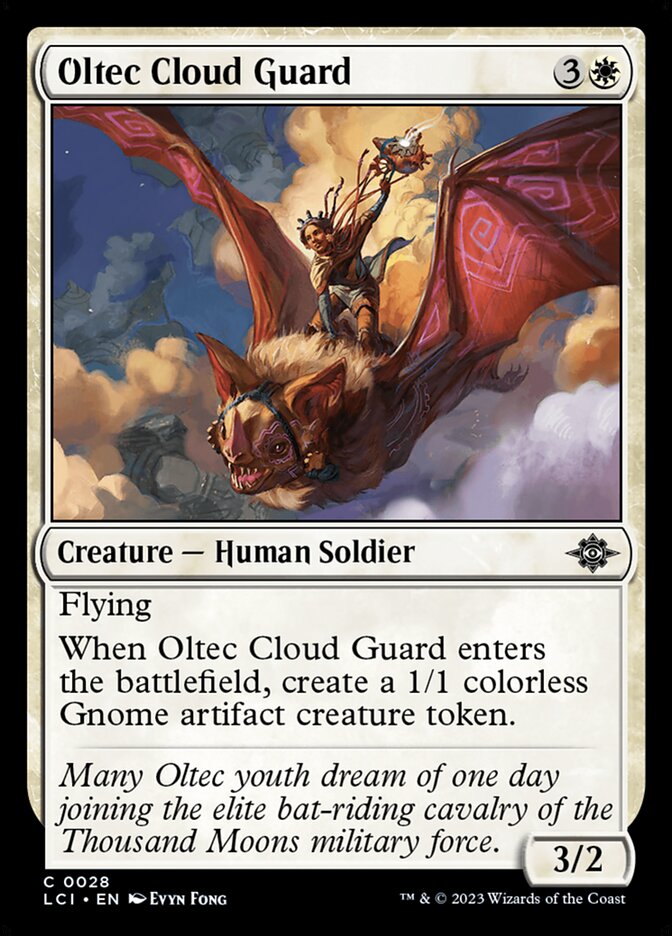
With Oltec Cloud Guard, the rate was even better than expected, and I’d miss that the Gnome token makes crafting easier. Sometimes you won’t have an artifact in your card, so getting that flexibility off a card you wanted to play anyways is bonkers.
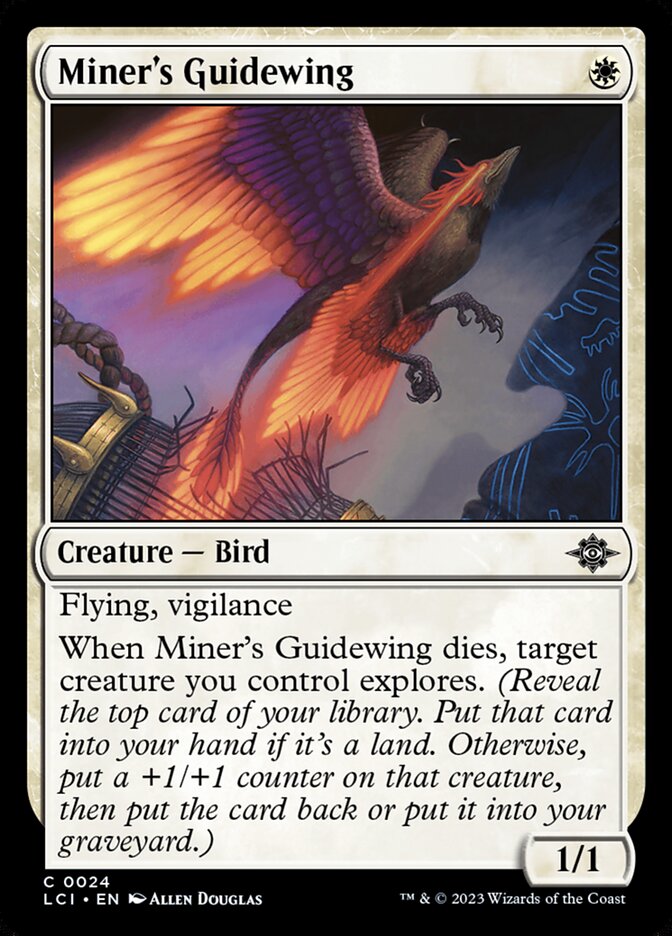
Good 1-drops continue their Campaign of Vengeance against older Magicplayers like myself! Miner's Guidewing pecks for damage early and then chumps/trades profitably later. Turn 1 Miner's Guidewing, turn 2 Ironpaw Aspirant is a practical and great start to any game.

So far, I haven’t suffered much from playing Petrify. You’ll occasionally come up short against Fanatical Offering rares like Bonehoard Dracosaur, but you should happily play this.
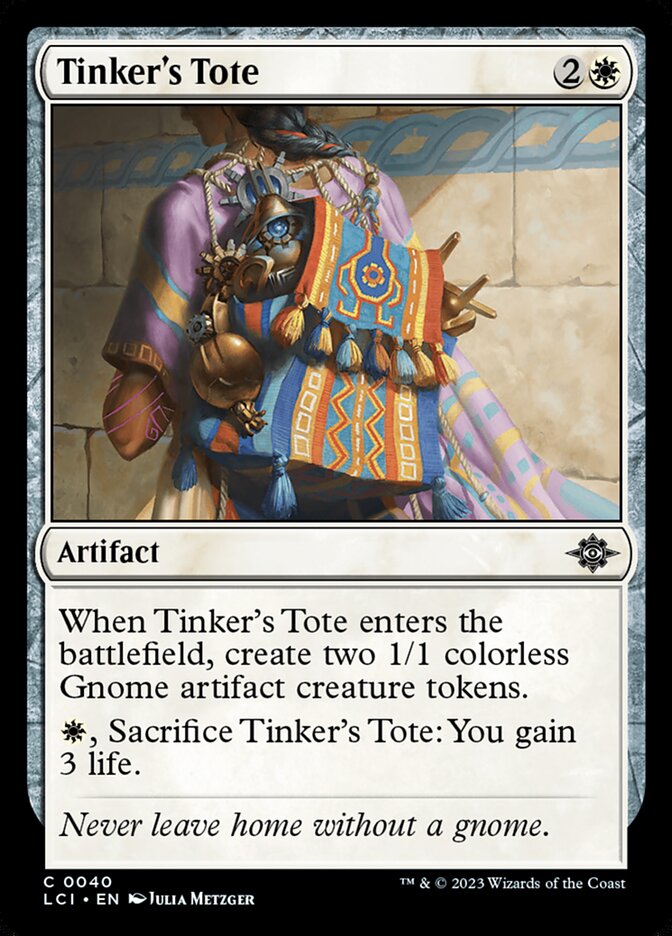
Tinker's Tote has overperformed! It’s three permanents for Boros/Orzhov and easy craft for Azorius. There are several x/1 creatures to profitably block as well.
My Score: 2/4
Envoy of Okinec Ahau was an odd choice by me, as it has basically been decent filler.
Blue
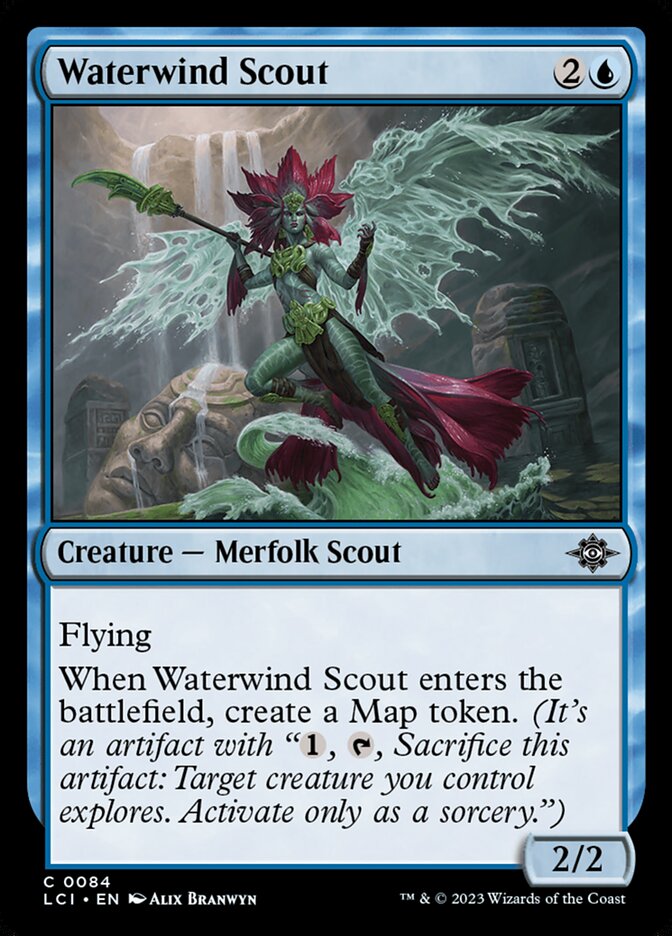
Waterwind Scout is a busted common that continues the proud tradition of Preening Champion and Inspiring Overseer. Attacks well, trades off for value, gives you an artifact for decks that care about that, etc.
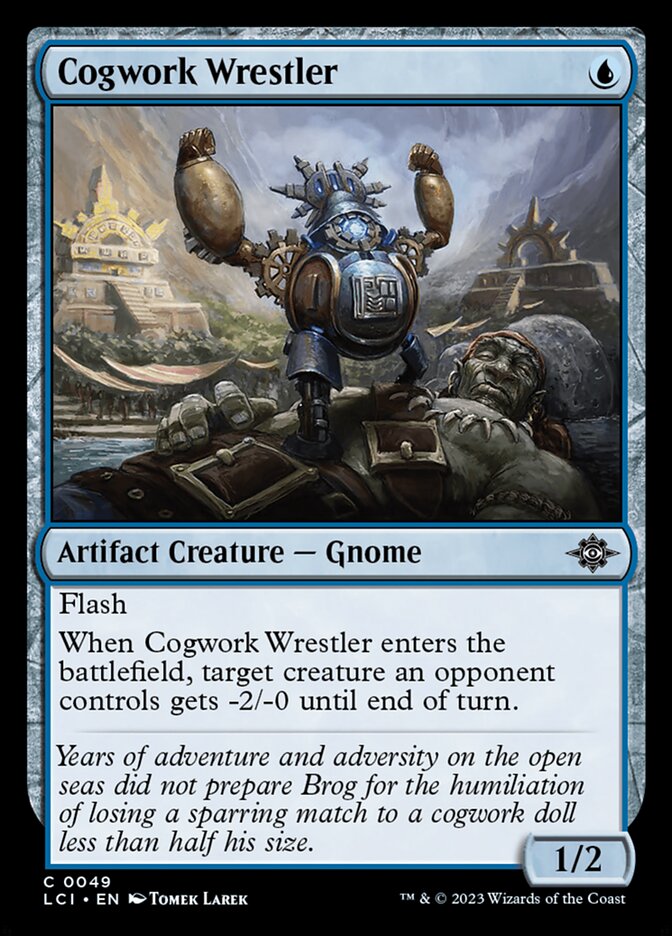
Zulaport Duelist has been upgraded! Lost Caverns is a very good format for this kind of effect, and the extra toughness/artifact type serves Cogwork Wrestler well. I’m happy to play 1-2 of these in any blue deck, so be careful attacking into mana.

Oaken Siren is a linchpin common for the two best archetypes in the format. It passively pecks your opponent while giving you another mana source for powerful craft cards.

As blue’s take on Colossal Dreadmaw, Inverted Iceberg is weird but good. Think of it like a cantrip adventure that draws a 6/7 later in the game, and you’ll see why it’s so good. Having a couple of ways to bin an artifact (i.e. Orazca Puzzle-Door or Tinker's Tote) is ideal.
My Score: 1/4
The other commons I mentioned are all solid cards, but I underrated how important good artifacts are for most blue decks.
Black

Sometimes edicts don’t impress, but this format has felt pretty edict-friendly if you can dodge Tinker's Tote. In addition to a Diabolic Edict, Tithing Blade gives you a free piece of cardboard that can be sacrificed for value or transformed into a slow but staple win condition.
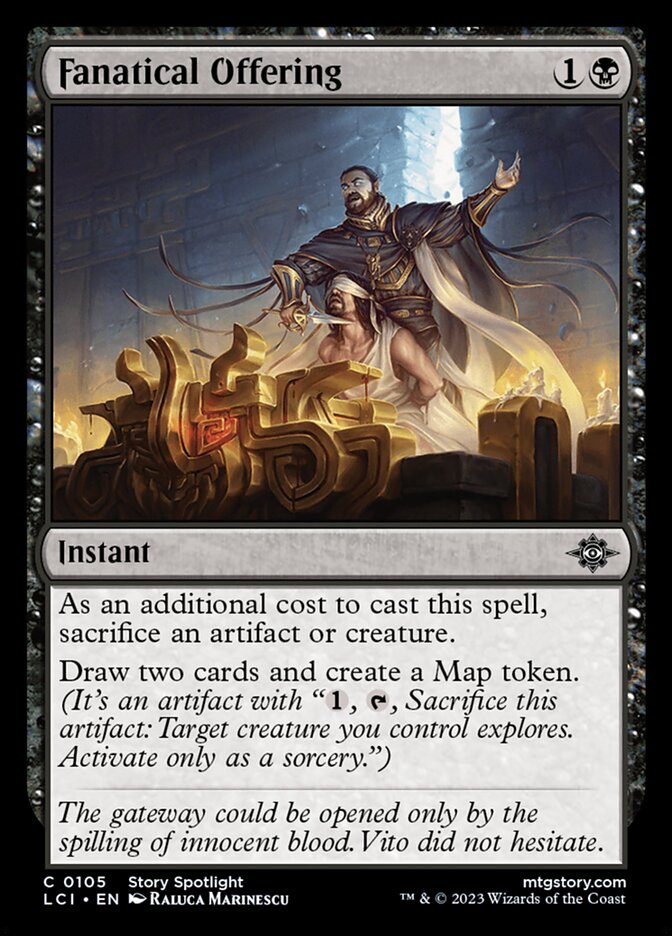
Black is pretty grindy when played correctly in this format, and Fanatical Offering is your best bet for pulling ahead in cards. You’ll need good fodder of course, but the reward is worth it.

I have yet to see Join the Dead not be Murder, but costs hurt when black is undesirable.

Lost Caverns lacks many practical ways to punish x/1s, which has greatly helped Deathcap Marionette’s reliability as a blocker. The extra self mill is also appreciated for descend and Another Chance.
My Score: 2/4
Skullcap Snail and Dead Weight just barely fell short of Deathcap Marionette in terms of stats, so black was a color I did well at evaluating. If you’re going to draft black, focus on removal and card advantage; you’re in no hurry to end games!
Red
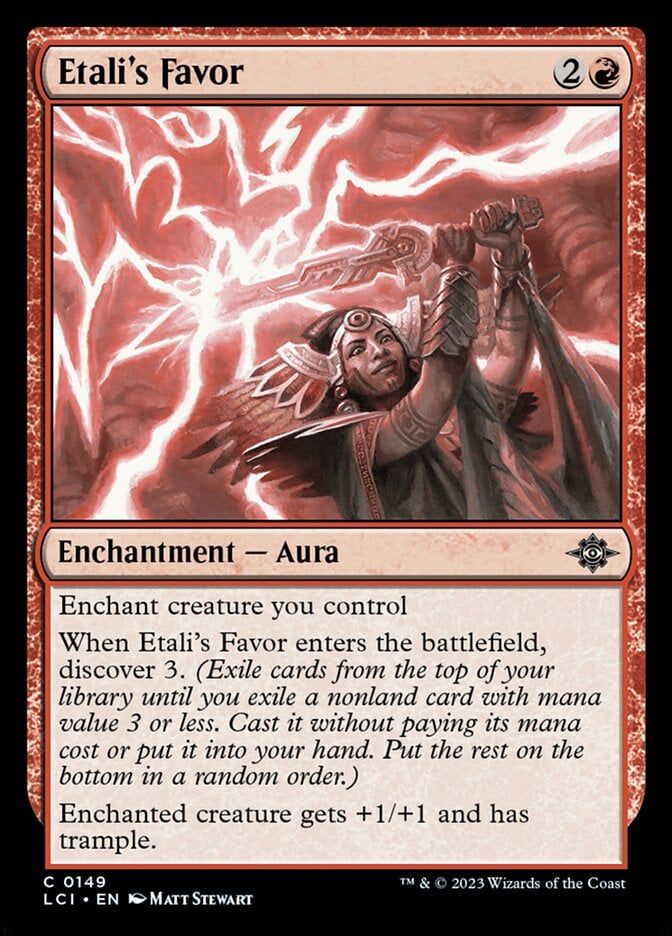
This unassuming aura has impressed me in a big way! Discover may be a “fixed” cascade, but it still has enough cascade in it to be powerful. In practice you can evaluate Etali's Favor as “ aura: +1/+1, trample, cast a 2-3 mana spell for free”, which is a strong rate. Just try to play a lot of 2-drops to make sure you can stick this safely early in the game.

Goblin Tomb Raider is much closer to a common Goblin Guide than expected. There are many other incentives to want artifacts, and the haste makes this a better topdeck than a usual aggressive 1-drop.
No nonsense removal with a powerful rider clause in a set like this. Raw win rates aside, I take Abrade over other red commons for its uniqueness and flexibility.
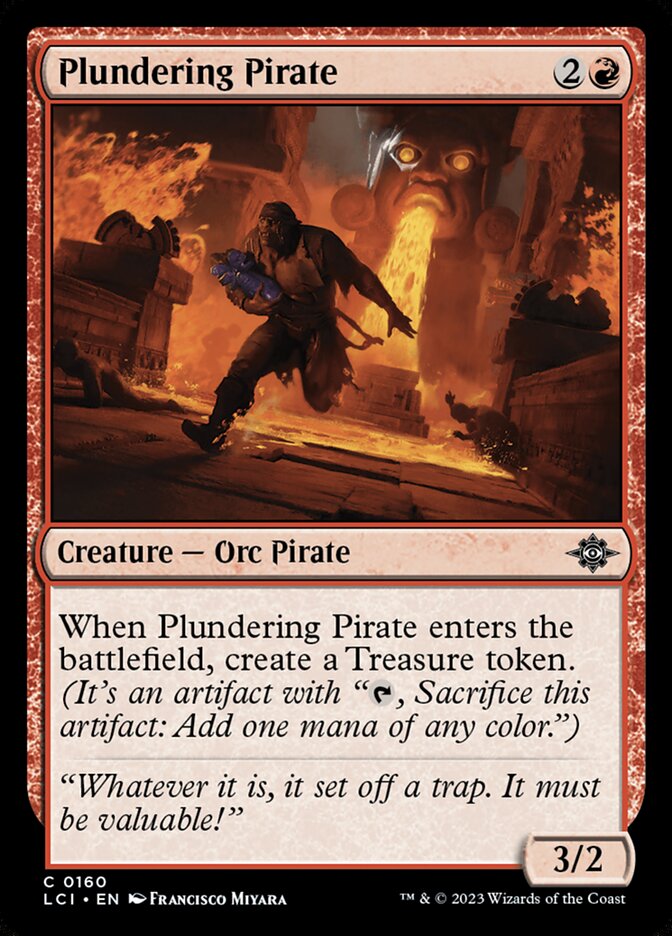
Plundering Pirate is great rate and the extra artifact/splashing potential has been relevant like expected!
My Score: 2/4
Middling score, though Volatile Wanderglyph barely missed the list. Sunshot Militia also belongs on this list in spirit as it plays much better than it reads.
Green
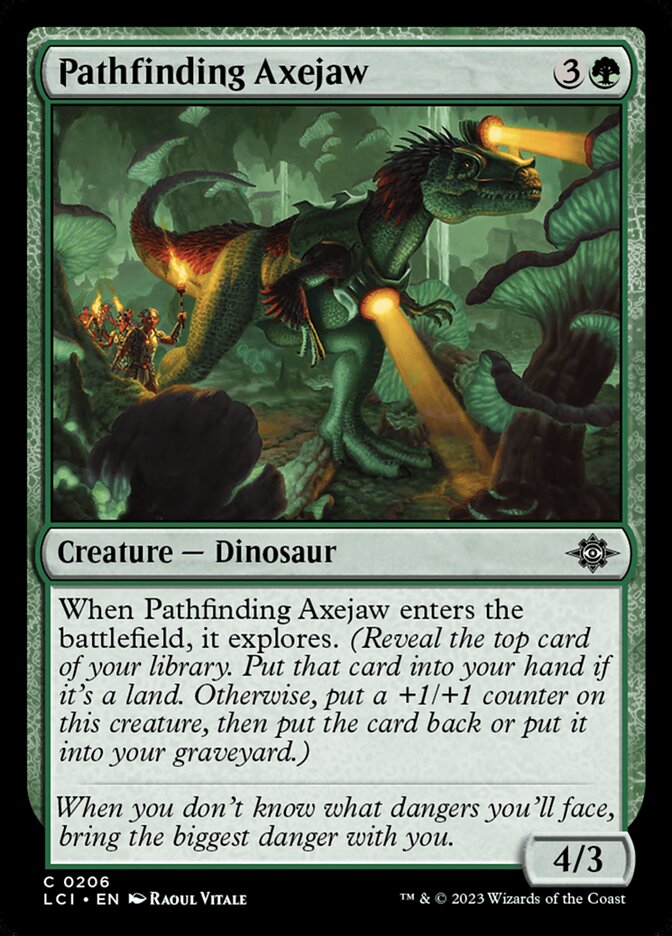
5/4 + surveil or 4/3 + draw a card are both great outcomes/rates for Limited. Pathfinding Axejaw is green’s bread and butter common, and outclasses all other common fours.

Do win rates lie? Staggering Size is the second most winning % common on 17 lands, and it seems to benefit from the set lacking many ways to retrick it. I wouldn’t take it over the other three on this list, but try to find room for 1-2 copies in your Gruul/Selesnya stompy decks.

Ambuscade effects like Huatli's Final Strike are still good. This card benefits from the set lacking much instant disruption for this kind of thing.

I love this frog! Poison Dart Frog scales to late game via deathtouch, splashes, trades with fliers, enables turn 3 Pathfinding Axejaw, and doesn’t have to fear much x/1 hate.
My Score: 3/4
Green was the color I did the best job at evaluating. Cavern Stomper is the runner up and gets an honorable mention as an excellent fattie worth ramping to. 7/7 sizing is notable for letting it bully all the cycling dinosaurs in combat.
Recapping Commons to Avoid
Let’s revisit the ones I listed:
- Relic's Roar
- This one is indeed pretty bad! You can play it in Izzet if you want to mise, but you’d be better off finding more reliable cards than this.
- Etali's Favor
- I clearly underestimated discover. Please play this card if you have 2-drops, it’s quite good!
- Tectonic Hazard
- Interesting card in BO3 for solving certain problems, but way too cagey for BO1 play.
- Disturbed Slumber
- Even worse than expected, although someone somewhere is going to kill a Resplendent Angel with this.
- Hunter's Blowgun
- Yet to see this in play, still reserve the right to sideboard this against fliers.
- Cartographer's Companion
- Not unplayable, not good. Nothing has changed in my evaluation, even for artifact decks.
Some other cards that have performed poorly:
- Family Reunion
- Not efficient as a Charge or a Loran's Escape, though you’re paying for the flexibility, of course. In practice I have yet to include this in any white deck.
- Frilled Cave-Wurm
- Mediocre blocker that might be a 4/5 if you have enough self mill. Playable in Dimir descend, but avoid everywhere else.
- Acolyte of Aclazotz
- Weak sacrifice outlet, though sometimes your Boros decks need extra ones if you can’t get enough Fanatical Offering.
- Vito's Inquisitor
- Similar deal, just not efficient or exciting even if Orzhov will sometimes play it.
- Child of the Volcano
- Growing this is unreliable for most decks, and games are rarely about mediocre 4-drops.
- Seeker of Sunlight
- Not unplayable, but definitely not good. You might play this if you’re hard up for mana sinks and need another cheap creature, but it’s rarely a good use of time.
- Kaslem's Stonetree
- I like 2-for-1s, but this is a very slow value card that requires caves to function properly. Certain decks enjoy this one, but it’s not the kind of card you should just throw into every green deck.
Draft Archetypes
Let’s revisit the archetypes discussed in the first guide for another appraisal. There’s a “big four” and then six other archetypes that are a bit worse.
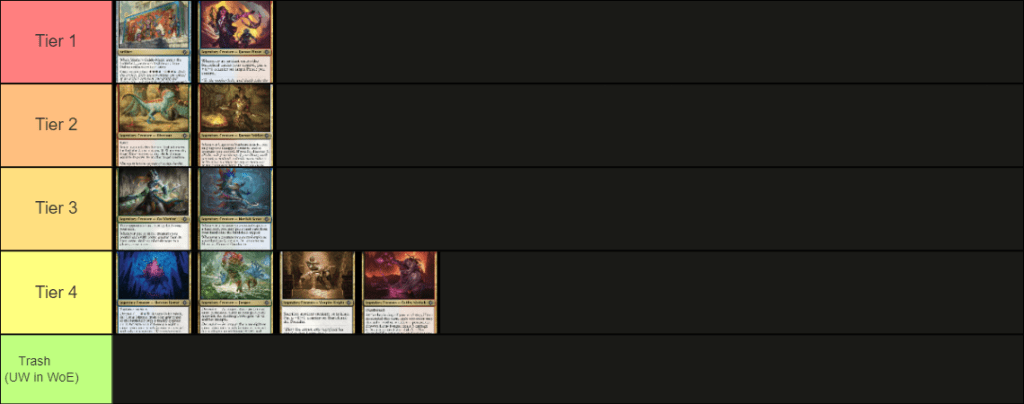
Azorius Artifacts
This deck has deceived my expectations a bit by being both better and faster than expected. Cheap flying beats are good, and supplementing them with big craft archetypes doesn’t involve any real stretches in deckbuilding. Oltec Cloud Guard is the glue that holds both of these play patterns together, and it wouldn’t surprise me to see a direct relationship between “# of copies of Oltec Cloud Guard” and “# of wins in Premier Draft”.
Payoffs
Clay-Fired Bricks, Spring-Loaded Sawblades, and Lodestone Needle are all excellent, both in a vacuum and in Azorius. You also have Braided Net and Unstable Glyphbridge for rares, if you’re lucky enough to open them. Azorius doesn’t depend much on higher rarity cards for success though.
Top Commons
Nothing special for Azorius other than the ones mentioned above. Fliers, efficient removal, and artifacts should be your focus.
Trophy Example
Playing Against It
Reach creatures, Abrade and other forms of cheap removal are ideal. You won’t need to kill a ton of artifacts against Azorius, so save your Over the Edge style cards for big payoffs like Master's Guide-Mural.
Izzet Pirates
This is the premier aggro deck of the format. This deck has a nice mix of cheap creatures, evasion, haste, and reach (i.e. ability to deal those last few points of damage). Stabilizing against Izzet can be quite difficult!
Payoffs
Captain Storm, Cosmium Raider is excellent, and probably the second-best signpost uncommon in the set. Zoetic Glyph is even better, though you’ll be competing with other blue drafters for it. Staunch Crewmate and Dowsing Device are also strong here, and good signs Izzet is open if they go late enough.
Top Commons
Goblin Tomb Raider, Waterwind Scout, Plundering Pirate, etc. Basically the top commons from above, but with a focus on artifacts/pirates.
Trophy Example
Playing Against It
This is a proper aggro deck, so try to avoid stumbling if you can help it. Dead Weight, Abrade, Petrify, and the like are your best bets. Beware of Unlucky Drop and Brackish Blunder later in the game, which can win races for them and/or bounce key blockers.
Gruul Dinosaurs
Gruul () Dinos has received a nice upgrade from past Ixalan sets, and it has been quite a legitimate contender so far. It has a fairly straightforward gameplan; ramp/trade early, then slam fattie-o-saur after fattie-o-saur until your opponent concedes.
Payoffs
Itzquinth, Firstborn of Gishath is the single best signpost uncommon in the set! It’s so good in fact that I’ve already splashed it in decks with no other dinosaurs. Think of it as a hasty Flametongue Kavu, and you should be well on your way to understanding its strength. There are other strong rewards for being Gruul like Belligerent Yearling, Triumphant Chomp, Earthshaker Dreadmaw, and Ixalli's Lorekeeper too. Gruul also has some of the best rares (Palani's Hatcher, The Skullspore Nexus, Pugnacious Hammerskull, and more) in the set!
Top Commons
The usual top commons are all good here, but Burning Sun Cavalry and Armored Kincaller deserve special mention for being directly on theme. Armored Kincaller has been particularly good for giving Gruul a life buffer against cheap fliers.
Trophy Example
Playing Against It
Hard removal shines against Gruul more than most other decks. This is where you’ll want your extra copies of Quicksand Whirlpool, Ray of Ruin, Deathcap Marionette, etc. If you have instant-speed removal/bounce, you might occasionally be able to stop Itzquinth, Firstborn of Gishath from doing its thing.
Boros Midrange
I call this “Boros midrange” but “Boros tappers” or “Boros untap” might also be appropriate. This deck goes bigger than most other Boros archetypes have in the past. It wants to build around “tap untapped permanents” cards like Sunshot Militia.
Payoffs
Warden of the Inner Sky and Thousand Moons Smithy are your bomb rares for this kind of deck. Caparocti Sunborn is the next best thing, and one of the stronger signposts in the format.
Top Commons
Sunshot Militia is essential and easily worth playing multiples of. Tinker's Tote has been my favorite way to stack permanents while not playing anything I’d hate to have in my deck. Adaptive Gemguard has also overperformed, and often demands removal in this archetype.
Trophy Example
Playing Against It
Sunshot Militia is annoyingly difficult to kill, as it dodges Dead Weight and tends to rarely be the best target for unconditional removal. Your best bet against Boros is often to take advantage of any mistakes they make tapping (or not tapping permanents). Boros must either give up blockers or forgo damage/value to protect itself.
Selesnya Aggro
This is a good and very straightforward archetype without much fanciness to it. You’re looking to curve out with creatures, turn them sideways, and maybe Huatli's Final Strike some blockers.
Payoffs
Selesnya’s underwhelming “power greater than its base power” theme appears on just two cards: Kutzil, Malamet Exemplar and Sovereign Okinec Ahau. Both are great reasons to be Selesnya though. I particularly like Sovereign Okinec Ahau when you combine it with group anthems like Restless Prairie and Malamet War Scribe.
Top Commons
Ironpaw Aspirant is a strong 2-drop in general that also complements your payoff cards well. Overall though you won’t be deviating much from basic expectations for top commons. This deck usually goes smaller than Gruul Dinosaurs, so I’d generally play attacking 2-drops over Poison Dart Frog. Staggering Size should be your go-to pump spell over other options.
Trophy Example
Playing Against It
Using removal correctly is key. Efficient blockers give you more freedom to wait for Kutzil, Malamet Exemplar to show up. If you’re another aggro deck, you’ll want to push your advantage on the play, and board into more ways to catch up from behind on the draw.
Simic Explore
Simic is a solid midrange deck built around the lovable explore mechanic. I haven’t been all that impressed with many of its payoffs, though. You’ll generally be going over the top of most decks in the format, but you’ll struggle to answer everything due to Simic’s limited removal.
Payoffs
Nicanzil, Current Conductor is good, but it’s probably one of the weaker signposts overall. I’ve liked Twists and Turns as a cantrip that flips into a ramp spell/late game win con. Merfolk Cave-Diver is a nice blocker that can help break the board stalls Simic often find itself in. Glowcap Lantern hasn’t impressed though, and there aren’t many other cards that specifically reward you for exploring.
Top Commons
Huatli's Final Strike and Pathfinding Axejaw are even better here than they normally are, as Simic struggles to kill things and needs premium explore creatures. Most commons that explore or make Maps are good, though I’d still hesitate to play Seeker of Sunlight.
Trophy Example
Playing Against It
Simic is slow and vulnerable to fliers/being raced. It’s also the color pair most likely to cough up a big fat L against giga bombs like Bonehoard Dracosaur, as it has only Huatli's Final Strike for hard removal.
Dimir Descend
Dimir is the first of two archetypes that can be described as “self-mill” strategies. Most Dimir decks'll be built around the descend mechanic and its various payoffs.
Payoffs
Uchbenbak, the Great Mistake is a decent signpost, but won’t get me into Dimir on its own. The best incentives to be Dimir are rares: Wail of the Forgotten, The Ancient One, The Everflowing Well and The Mycotyrant (you can splash it) are all strong reasons to consider Dimir. Without rares, you only have Uchbenbak, the Great Mistake, Council of Echoes and Stinging Cave Crawler to lean on.
Top Commons
Once you are locked into Dimir self mill, your card priorities are going to change a bit. Top commons like Waterwind Scout and Join the Dead are still good, but you’ll also want cards to help fill your graveyard directly. Deathcap Marionette, Sage of Days, Song of Stupefaction, Orazca Puzzle-Door, and Another Chance are the best options for doing this.
Trophy Example
Playing Against It
Graveyard hate like Digsite Conservator and Pit of Offerings are worth boarding in if you have it. Uchbenbak, the Great Mistake is vulnerable to Petrify and exiling removal. Dimir can struggle to answer fast starts or several fliers at once too.
Golgari Descend
Golgari is a slightly different flavor of descend that substitutes blue cards for green ones. The focus on milling yourself to hit descend payoffs remains though. You can also ignore mostly descend and play Golgari as a good stuff deck ( for creatures/ramp/splashing, for removal). I often find myself doing this in Sealed, but have yet to do so in Draft.
Payoffs
Akawalli, the Seething Tower is surely a stronger payoff than Uchbenbak, the Great Mistake. It has a passable baseline and quickly improves with setup. Green has fewer descend payoffs than blue though (basically just Coati Scavenger otherwise). If you're pursuing a descend theme, expect to splash for Dimir payoffs frequently.
Top Commons
Golgari has an unfortunate time with self-mill at lower rarities. It lacks a critical mass of decent options like Dimir has, and instead must lean hard on Deathcap Marionette, In the Presence of Ages, and Another Chance. You might need to get to 4/8 the old fashioned way with cyclers, Dead Weight, and trading in combat.
Trophy Example
Playing Against It
Akawalli, the Seething Tower must die! If you can avoid getting punched by a giant fungus, your odds against this archetype should be much more favorable. Graveyard hate might also be of interest, depending on how committed your opponent is to the descend plan.
Orzhov Sacrifice
This is a fun archetype with a pretty involved game plan. You’re looking to balance disposable creatures/artifacts with ways to sacrifice them for value. Orzhov isn’t much of an aggro deck and usually wins via incremental advantages.
Payoffs
Bartolomé del Presidio, Vito, Fanatic of Aclazotz, and Tarrian's Journal are the kind of cards that put you on the right track. Orzhov also makes great use of cards that care about descending once per turn like Stalactite Stalker and Corpses of the Lost. Prioritize higher rarity sacrifice outlets as the common ones are significantly worse.
Top Commons
There are many good options for fodder at common: Tithing Blade, Skullcap Snail, Tinker's Tote, Mephitic Draught, etc. These are obviously important for your value plan, but you have enough redundancy to take quality removal/uncommons over them.
Trophy Example
Playing Against It
Going after Orzhov’s sac engines is ideal if you're going to play the long game against it. If you're playing the beat down this becomes less important. You might want to board out Petrify and Song of Stupefaction here, as Orzhov has many ways to 2-for-1 you for your troubles.
Rakdos Descend
Rakdos’s take on descend is unique; rather than going for a big graveyard, it instead cares about the act of descending itself. You'll be looking to use cards like Dead Weight and Fanatical Offering to repeatedly trigger Deep Goblin Skulltaker and its ilk. Rakdos is my pick for the weakest deck in the format due to a lack of quality payoffs for this play pattern.
Payoffs
Zoyowa Lava-Tongue is pretty good (though not the best), but there’s a severe lack of other cards to care about. Enterprising Scallywag is decent but underwhelming, and Canonized in Blood has been pretty terrible. Past those there’s Brass's Tunnel-Grinder and… basically nothing else for the theme!
Top Commons
There are three commons that care about “descending this turn”: Broodrage Mycoid, Deep Goblin Skulltaker, and Child of the Volcano. Each gives you some kind of modest payoff for descending that turn, which can be accomplished via specific cards or having your opponent trade with something in combat. Deep Goblin Skulltaker is the best of the three due to its evasion and cheaper cost.
Overall, I’d treat “descended” as more of a subtheme and just focus on generally strong commons here. The ideal Rakdos is lean, aggressive, and full of powerful higher rarity cards that justify you playing this color pair!
Trophy Example
Playing Against It
Rakdos’s payoffs are all pretty vulnerable to removal, and most of them won’t be generating any kind of long-term value either (just sizing). Not stumbling early makes the decisions Zoyowa Lava-Tongue forces you to make less-back breaking.
Other Archetypes
The 10 2-color archetypes aren’t the only thing you can do in this format (though they do cover most of the set). There are a couple of other sub archetypes you can attempt detailed below.
Caves
Caves are a new land type that can either complement existing archetypes or be its own thing, if you're dedicated enough. One unique aspect to cave cards is that they power up their payoffs both when they're in play and when they're in your graveyard. These are the payoff cards for drafting around Caves:
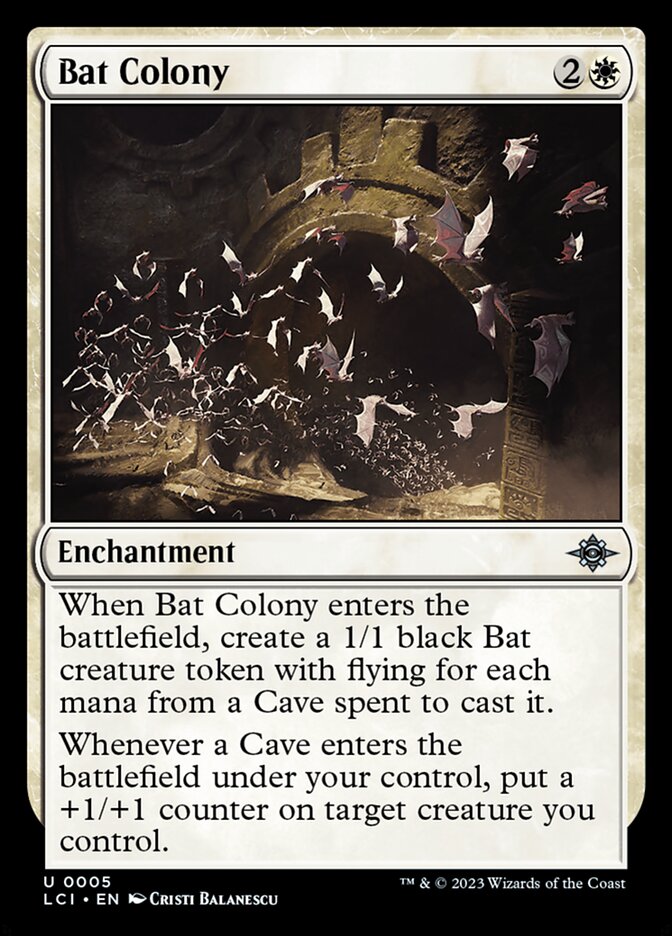
If you can make three bats off of this, the rate is wild! Unfortunately, this requires mana from a cave, which means Promising Vein won’t be of use here.

Excellent Mulldrifter of sorts that I’d want to splash if possible. Requires fewer caves than most of these other payoffs, as you really only need two caves for this to be great.
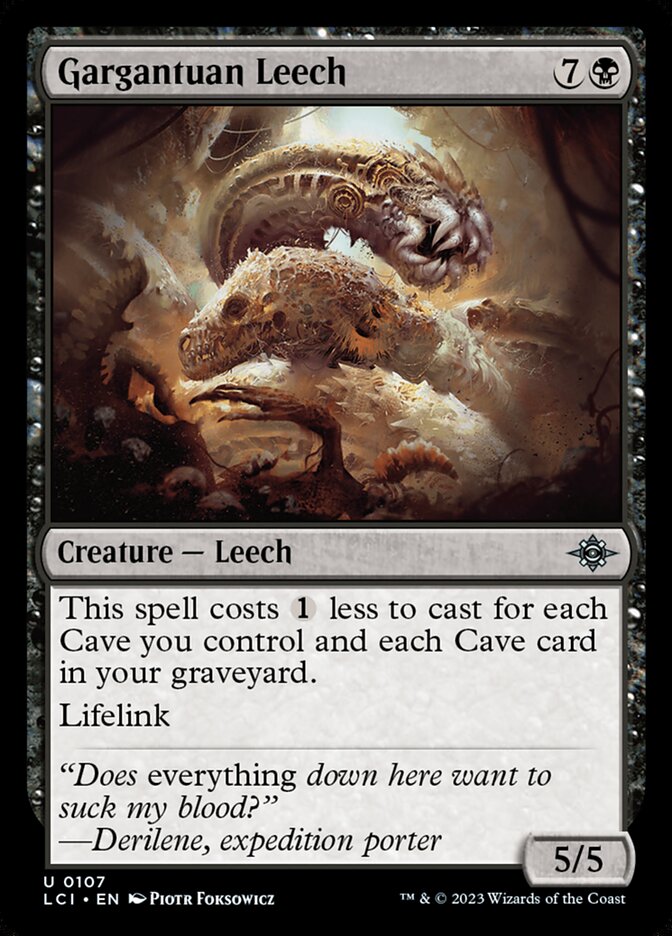
The rate here is bad until you have 2 caves, at which it becomes passable. The ceiling on Gargantuan Leech is high, but you’ll need to go deep on Caves to realize it.
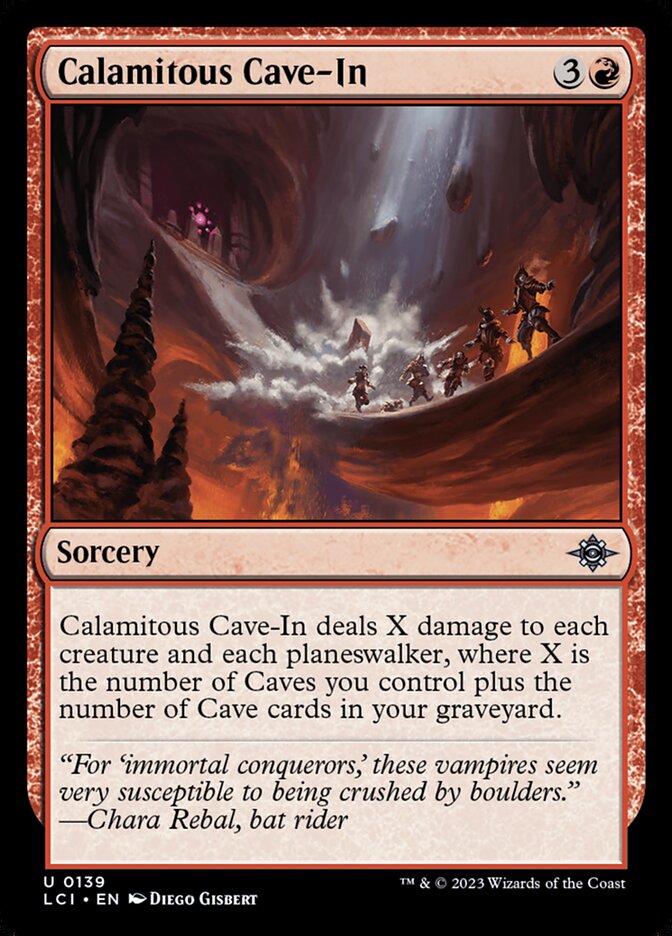
Like Gargantuan Leech and Bat Colony, this is a pretty all-in payoff. If you don’t have 7+ caves, you'll get poor #s off of this and be embarrassed every time you draw it.
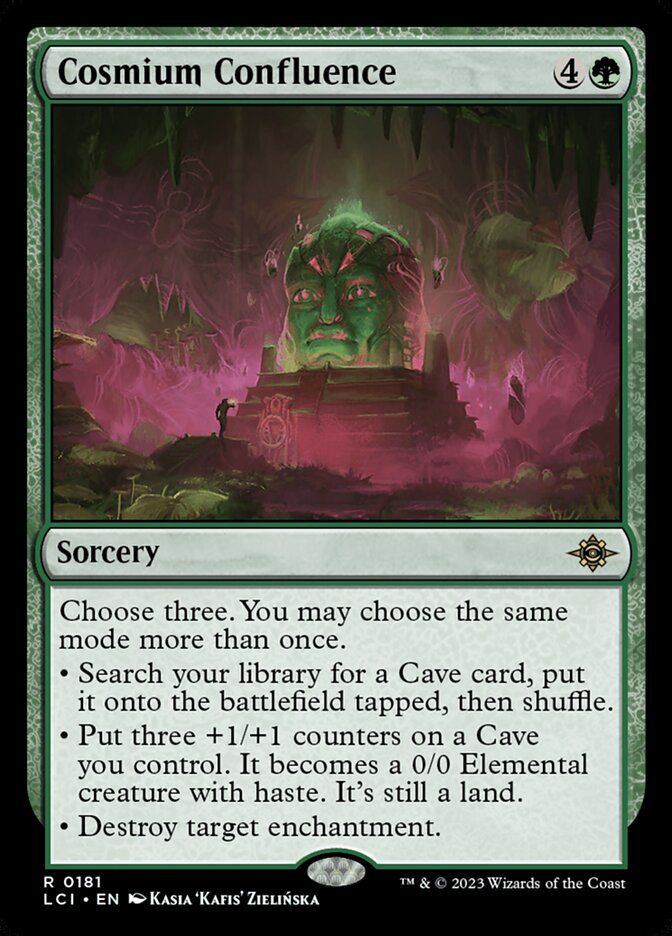
This doesn’t require a dedicated cave deck to be good (please play this in any deck with 3+ caves), but it does get even better in one.
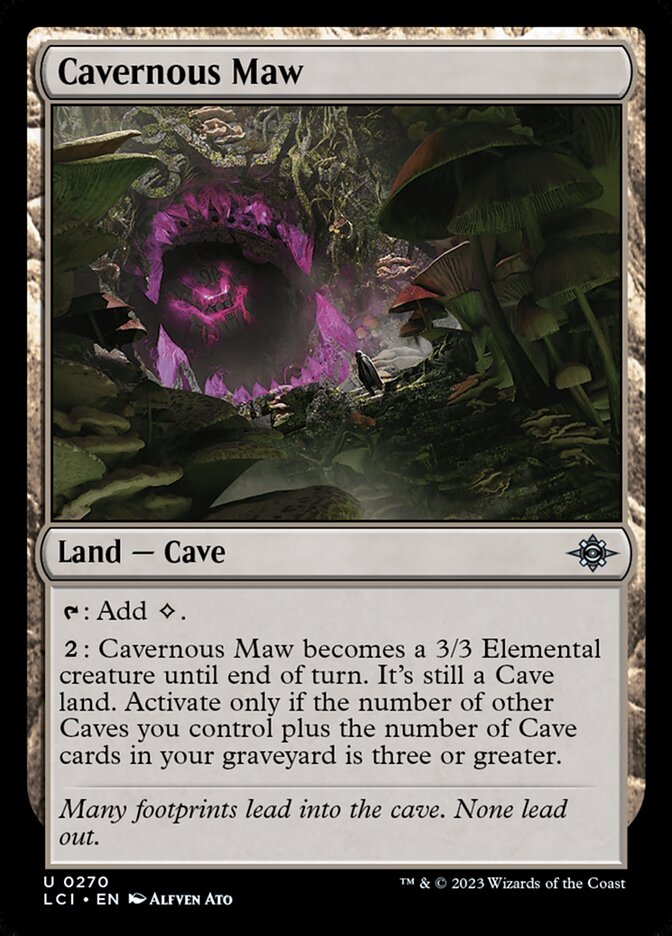
This is a strong manland, but it requires a bunch of caves and doesn’t readily contribute to casting colored spells. Definitely of lower importance than the spells.
Here's my assessment:
- You can play/splash Sinuous Benthisaur anywhere with 3+ caves.
- The other cards are only good with 7+ caves and form their own archetype. Please don’t play them in random 2-color decks that just happen to have 3-4 caves because they won't be good.
Here are the cards and colors to prioritize when drafting the “Cave deck”.
- Most Cave decks should be base green and then splash other colors for removal/bombs/cave payoffs as needed. Base green gives you Poison Dart Frog, Kaslem's Stonetree, and Spelunking.
- You should also prioritize Promising Vein and the common Hidden cycle of caves, even over solid commons. Having a critical mass of good lands is essential to this strategy.
- Premium single pip removal like Petrify and Abrade is essential, as you'll be on the backfoot in most games.
- The easiest way to commit to drafting this strategy is to table one of the above uncommons, then make a determination to commit.
I have yet to give this archetype a real try, but I’d like to soon!
Izzet Artifacts/Midrange
This is basically just Izzet Pirates minus red, or perhaps Azorius artifacts minus white. The basic gist of this deck is that blue is a really good color, and sometimes you’d rather not give up on that Aclazotz, Deepest Betrayal you opened! Thus you don’t need to worry about being Dimir descend or not; you can simply play good cards like Waterwind Scout, Deep-Cavern Bat, etc and win with a standard game plan.
Format Tips
Sideboarding
If you are playing BO1, you can ignore this, but here are some common sideboard play patterns to look out for:
- Boarding in/out combat tricks based on known information (i.e. they saw Staggering Size, why not Acrobatic Leap this game to throw them off)
- Artifact/enchantment hate for bombs like The Belligerent (Deconstruction Hammer and Over the Edge mostly)
- Graveyard hate for Dimir/Golgari (I draft Pit of Offerings as a SB card for these matchups, and rarely start it without cave synergy)
- Changing up blocker sizing to better match opponents creatures
- Boarding in extra reach/fliers against Azorius (basically just Mineshaft Spider… did I mention how good fliers are in this set?)
- Extra hard removal for decks with a higher # of strong standalone threats
- Out of Air to catch 6-drops and bomb rares
Gameplay Tips
- Be careful with your own “tap untapped” abilities. You don’t want to tap too many blockers and leave yourself dead on board (or dead to a removal spell). Sometimes giving up 1-2 damage from Sunshot Militia is correct.
- The best craft value always comes from your graveyard, but don’t forget that you can always use Gnome tokens, Tithing Blade, etc. too.
- Proper drafting of Lost Caverns involves prioritizing cards that are good everywhere (i.e. Waterwind Scout) and trying to find a seat in one of the big four.
- If none of the big four are open, follow signposts into other decks as discussed earlier.
Wrap Up
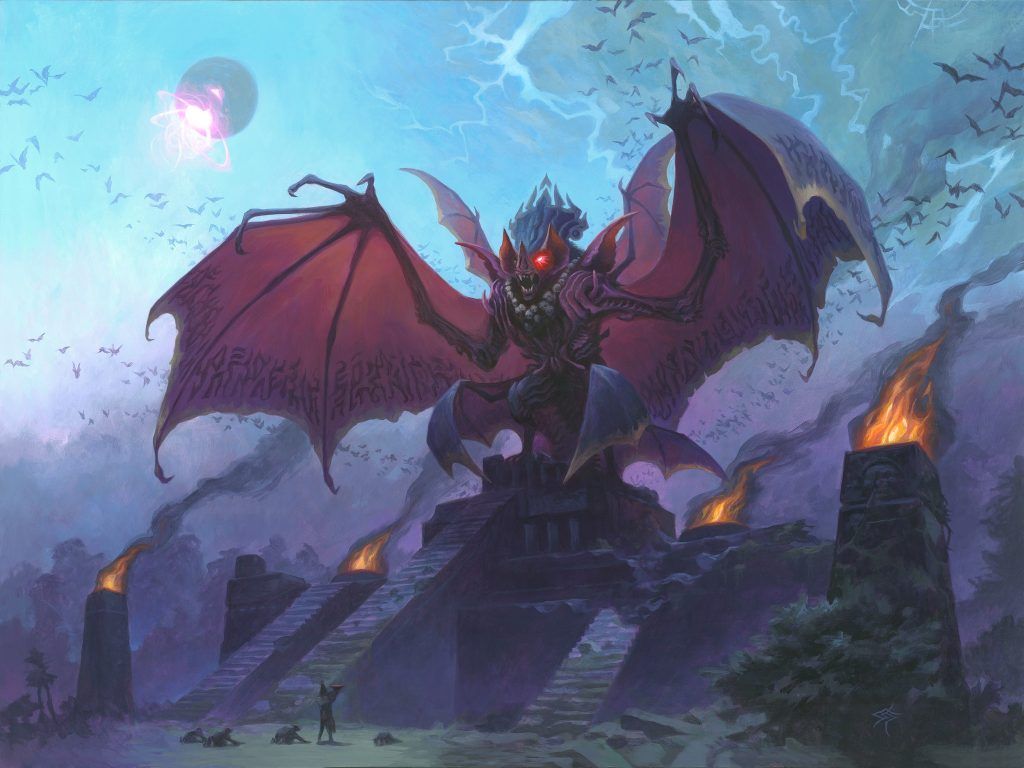
Aclazotz, Deepest Betrayal | Illustration by Steve Prescott
Whew! And with that, we've covered The Lost Caverns of Ixalan! There’s more I could add about the format, but I’ll wrap this up so I don't repeat myself. I’d encourage you to remember that tempo is king, so expect lots of games that come down to flier races, jockeying for early board position, etc. If you can get past the early game safely, many decks run out of gas and end up in awkward board stalls.
Let me know which archetypes you're looking to build around in the comments below, and if you have any other burning questions about the format. Or, if you prefer, come on over to our Discord!
Until next time, may your explores always find exactly what you need!
Follow Draftsim for awesome articles and set updates: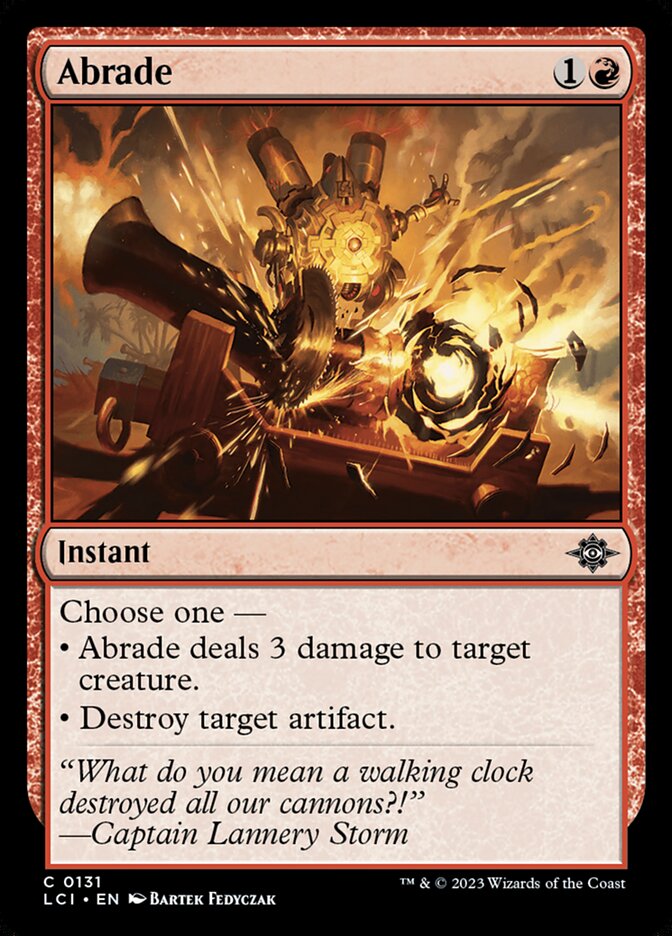
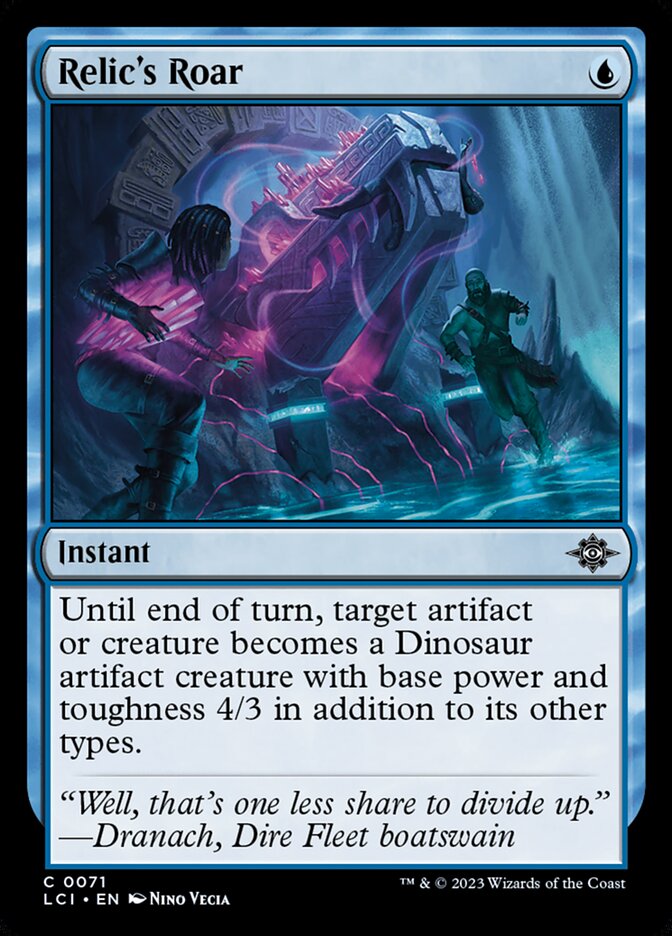



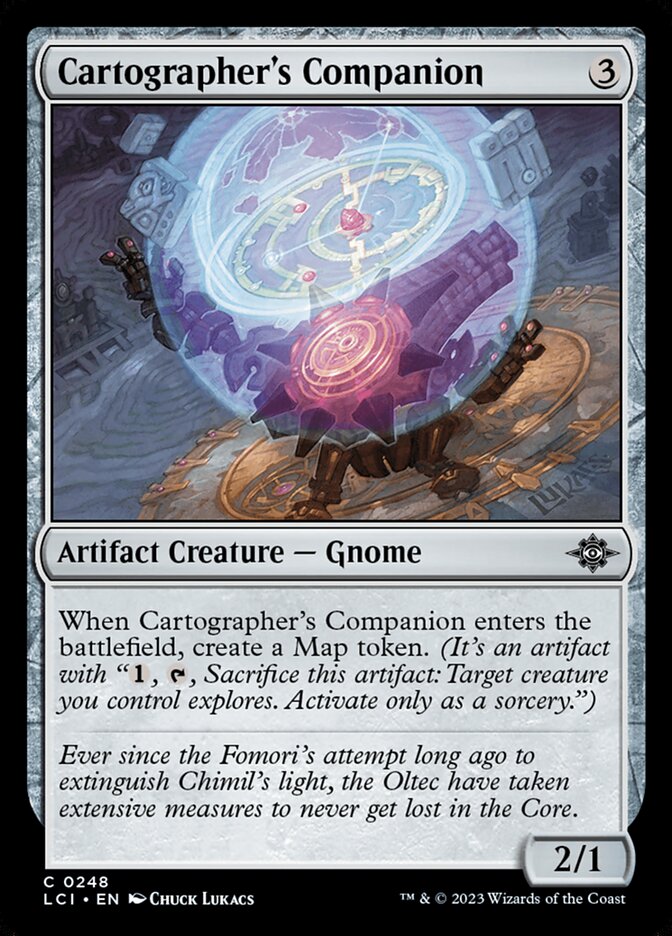
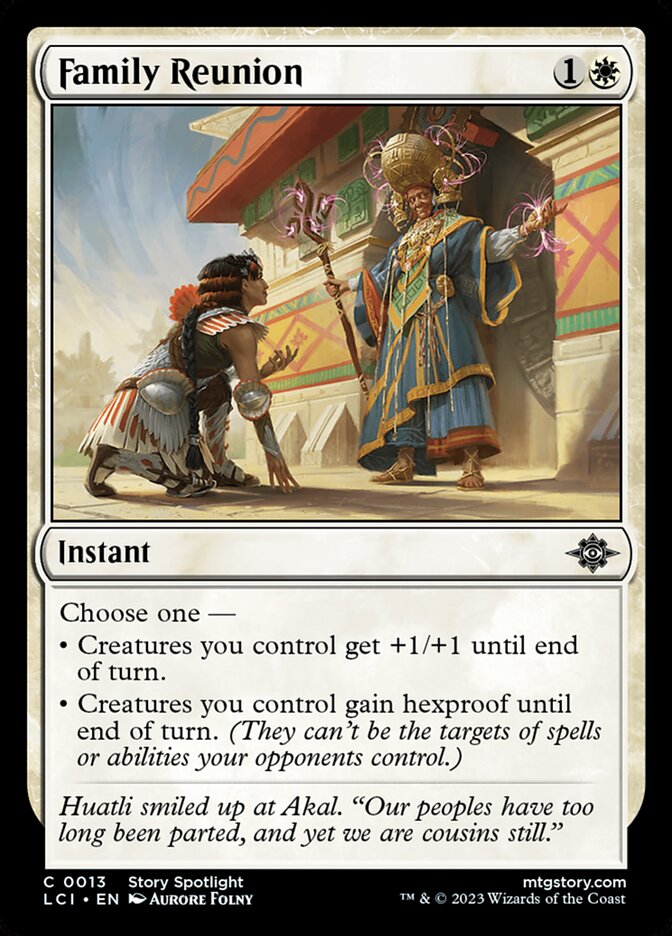
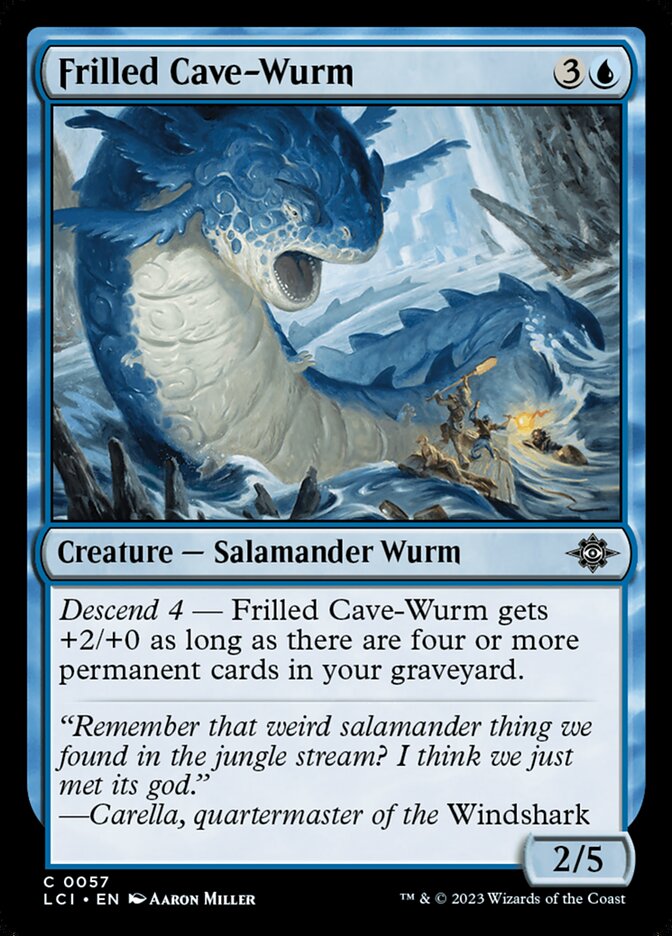
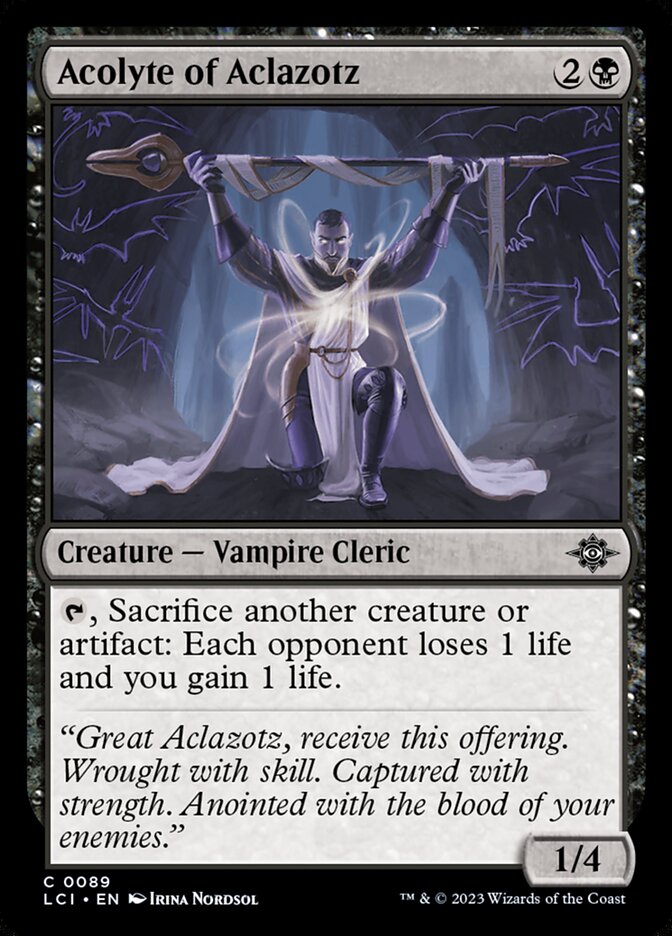



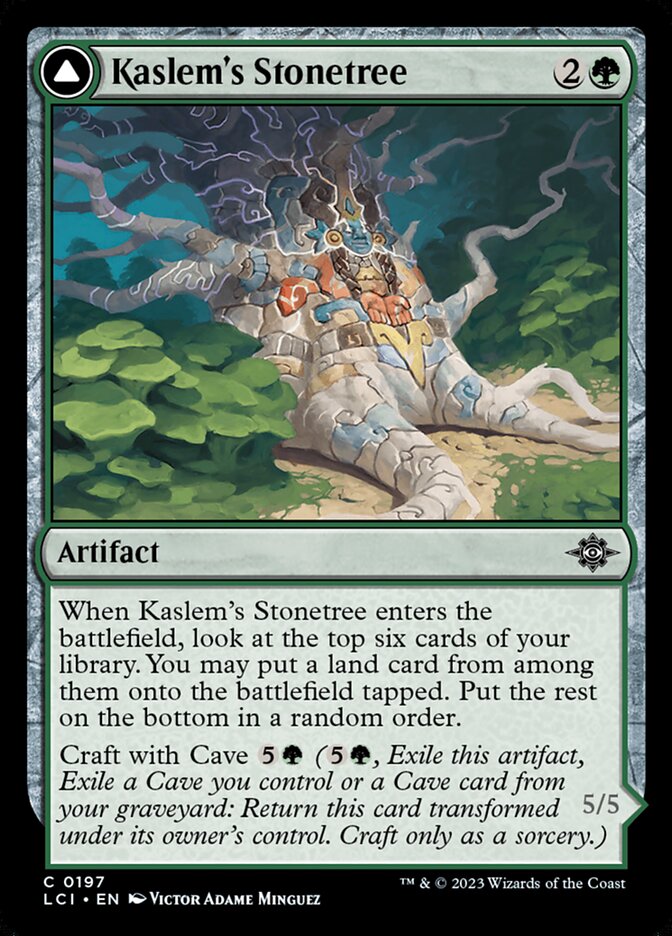

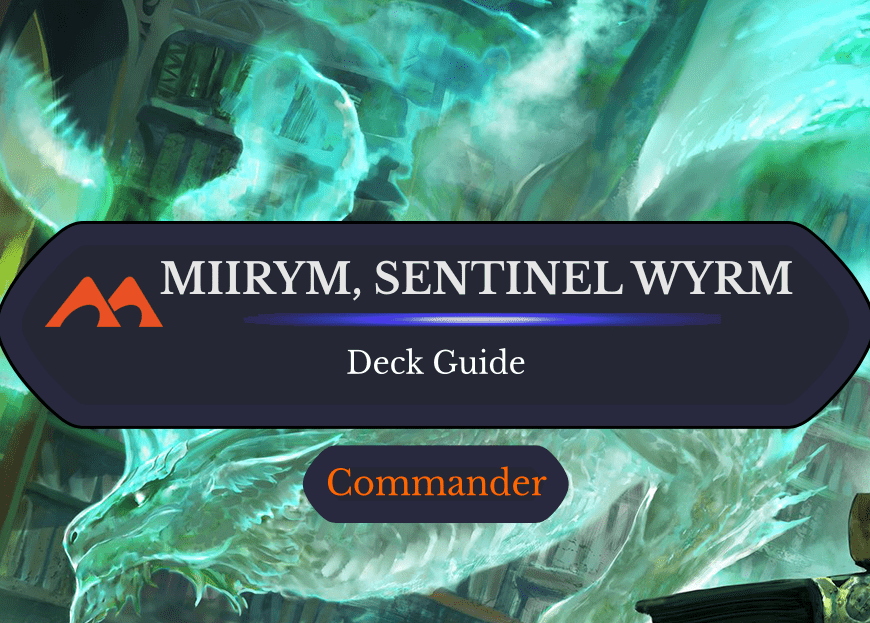
1 Comment
How about an all in on discover deck?
Add Comment